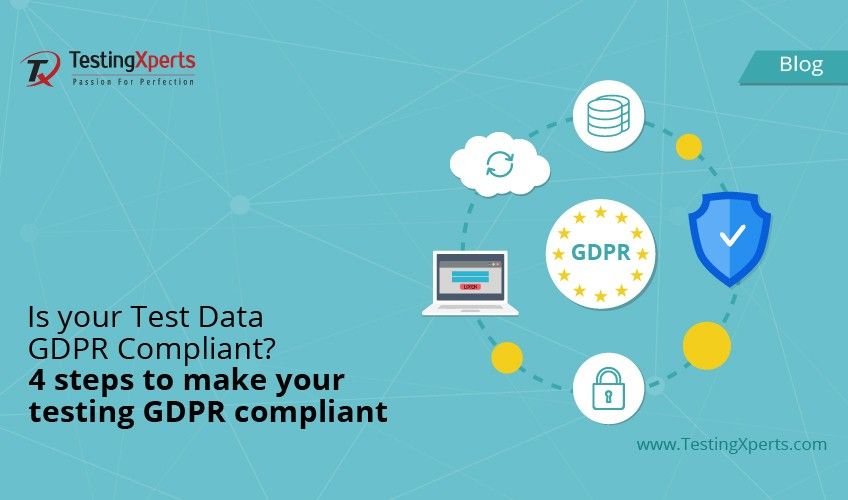Contents
1. GDPR Compliance
2. Steps to make your Testing GDPR compliant
3. How can TestingXperts help?
The rapidly approaching GDPR deadline, i.e., May 25, 2018, is clearly on the horizon. GDPR is not just limited to the European Union. Even if you are not a European-based business, you will be affected if you have customers in the EU.
GDPR affects all businesses within and outside of the EU who hold personal data for individuals within the EU. From IT operations to marketing, anyone dealing with personal data needs to recognise how GDPR affects their data workflows. GDPR applies to all the data that is gathered from the ecosystem, whether it is provided by customers or gathered by automated systems. This also includes personal data stored and used in big data analytics platforms.
GDPR Compliance
In many organisations, development teams deal with data from real production environments and usually, this data originates from customer databases. However, testing with real data often causes problems regarding information security and confidentiality. GDPR necessitates explicit attention to this practice. Every data that includes personal data is subject to GDPR compliance. It is illicit to have personal data anywhere where it is not-obligatory.
Therefore, Test Data Management(TDM) is an area that definitely needs attention from GDPR perspective. From bringing efficiency to data processing and testing the quality of deliverables, TDM is susceptible to vulnerabilities around organisational and regulatory standards. Therefore, various measures (e.g. masking) should be employed to ensure that the personal data is encrypted.
Test data may become a block in your preparations for GDPR. In order to address the challenges associated with testing and make the testing GDPR compliant, it is important to follow the below steps.
Steps to make your Testing GDPR compliant
-
Document the use of personal data in test environments.
Documenting the personal data should be the first step in your GDPR compliance process. This includes listing down the data in backups and the subsequent replicas that the testers have created for themselves. This step might expose uncomfortable surprises, like huge amounts of personal data in test database tables.
-
Develop a smooth test data management process
A lean and adaptable process is needed to stay in control for a smooth test data management process. Properly analysing and tracking the document from where the real data is coming, and where it is going is important. According to the new regulation, it is important to ensure that no personal data is open to business users, software testers, test managers, and other team members during software development, maintenance and test phases.
-
Employ a combination of masked data or synthetic data for testing
Though using synthetic data is a desirable option, but it is not always promising. Hence, it might be prudent to use a combination of carefully masked data along with synthetic data.
-
A proper review of privacy policies
Privacy policies must be articulated accurately. There should be a specific reason for collecting, sharing, storing, and using the personal data among third-party processors. Consequently, it is also important that you are reviewing the third party policies as well to make sure they comply too.
How can TestingXperts help?
Adherence to the regulation will require a comprehensive test data management software approach. TestingXperts will help you build cross-functional teams for you to carry out various GDPR assessment and implementation activities with Tx’s GDPR framework. Tx has a step-by-step phased approach to GDPR compliance to provide a comprehensive solution.

